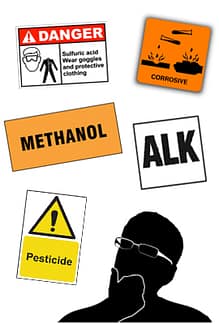In 2016 we will start a series of articles which address the very important issue of how to size, select, install and use a metering pump properly. As we all know, chemical metering pump applications are sometimes very complex and require planning and preparation from early on to ensure a successful installation. This series of articles are divided into the following eight sections:
 1. Planning: Before we even start with sizing the pump, it is important to plan the application. We take into consideration various things such as the chemical, its physical and chemical properties, storage tank and its location, day use tank and its location relative to the pump and more especially its suction port, the injection quill and its distance from the pump, electrical power requirement etc.
1. Planning: Before we even start with sizing the pump, it is important to plan the application. We take into consideration various things such as the chemical, its physical and chemical properties, storage tank and its location, day use tank and its location relative to the pump and more especially its suction port, the injection quill and its distance from the pump, electrical power requirement etc.
2. Sizing: Here we start with the flow requirements and how much back pressure we encounter in the injection process. We also take into consideration the physical properties such as viscosity and density, and compensate for it. Dosage variation demands are also very important considerations.
3. Selecting the right pump: This is where you understand the different choices you have in types and brands of pumps and how to differentiate between them. We will also discuss life cycle cost versus purchase price of a pump.
4. Selecting the right material: Most chemicals are corrosive in nature and they require selection of material that is resistant to chemical attack. Knowing the exact chemical, its temperature and concentration is critical in selecting the right material.
5. Configuration: Do you want a leak detection system? Is the environment filled with flammable gasses or liquids in which case? What type of connections do you need for suction and discharge piping? These are the questions which will be addressed in this section. If these are not properly attended to it could result in installation delays and waste of money in rework.
6. Controls: Metering pumps by definition need to be very accurate. However these need to be controlled adequately to maintain the accuracy and repeatability. Will you be controlling manually? Or electronically? Or pneumatically? Would the installation require verification and feedback of the flow? Would the controls need to be local or remote?
7. Accessories: Seldom do the metering pumps get used by themselves. Usually they are a part of a larger system. They would need various accessories such as calibration column, back pressure valves and safety relief valves. Without these accessories the pumps may not be accurate or durable.
8. Skid Systems: Since these pumps are mostly used as a system, it is useful to look at the possibility of buying the complete system from one source. The advantage is that when any component fails or does not perform well, you are not left chasing different vendors who usually blame something else in the system.
Starting with our next article, we will publish one article each until the series is complete. You will then have the ability to download the entire paper from our main website.